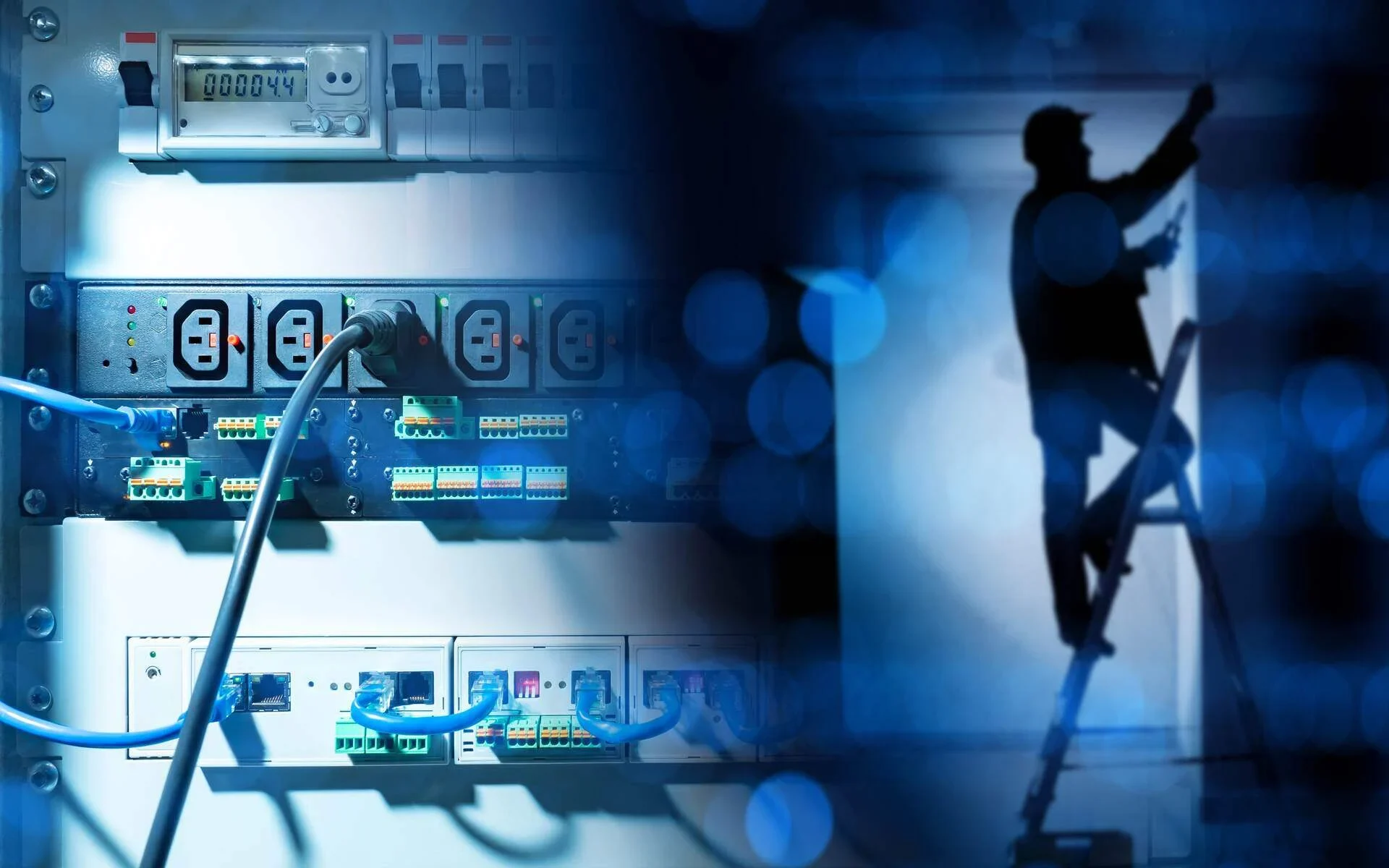

Our country is undergoing one of the most significant energy transitions in history. Fossil fuels are giving way to energy-efficient solutions, paving the road to a future where major systems and appliances are powered by electricity.
This shift, known as electrification, requires significant investments and upgrades. For contractors like yourself, electrification is an opportunity to position yourself as a leader in your field and grow your business. There are multiple benefits, from bigger jobs to more profitability.
Becoming an electrification leader calls for some strategic adjustments, but it’s an accessible goal for any contractor willing to make a few changes.
What is electrification? How can you join this movement? You’ll find the answers to these questions and more below.
What does electrification mean? Electrification is a paradigm that is reshaping our country’s energy infrastructure. The aim is to replace fossil fuels with electricity, build a modern electric grid, and enhance energy efficiency.
Electrification more broadly includes all forms of electric vehicle (EV) transportation and the conversion of buildings from fossil fuel dependence to electricity with technologies like heat pumps and electric appliances.
The electrification revolution has far-reaching benefits for all stakeholders. These include:
For electrical contractors, electrification is the most significant opportunity of the century. As people and businesses embrace electrification, the need for electrical upgrades, installation services, and maintenance will continue to grow.
In fact, transportation electrification alone could create 160,000 jobs by 2032 and reach a market size of more than $156 billion by 2029.
Besides, many of these electrification projects are bigger than the average contracting job, contributing to a business model where each new customer acquired is worth more, and profitability is higher due to project size.
Residential customers invest in electrification for several reasons, including embracing a more sustainable lifestyle, lowering energy bills, and gaining independence from the grid.
Opportunities for contractors include:
Between new energy-efficient construction standards and corporate ESG goals, a growing number of organizations are looking into building electrification. With commercial buildings consuming over 17% of the energy produced in the U.S., adopting electrification solutions and managing costs have a significant impact on businesses and other organizations. Plus, companies can often offset the upfront cost of electrification projects thanks to commercial electrification incentives introduced by the Inflation Reduction Act.
Due to their large scope, commercial electrification projects can be significantly more profitable. Here are some trends shaping the commercial electrification industry.
Building electrification is a holistic approach to managing a building’s energy consumption. It often involves designing a customized solution that leverages several technologies, including:
As many as 4 million fleet vehicles could be electric by 2030. Given the lower total cost of ownership and stricter regulations surrounding fleet emissions, going electric is an appealing investment.
Fleet managers need electrical contractors to assess charging needs and design an infrastructure to power their electric fleets. Options include building charging hubs that leverage advanced power management solutions for DC Fast charging or managing at-home charging for fleet drivers.
Commercial buildings now offer EV charging as a perk for employees or customers. This amenity often requires an electrical upgrade.
Businesses and public entities are turning to renewables for several reasons:
As a contractor, you can help businesses embrace renewable energy by designing integrated solutions. For instance, a popular option is to pair solar panels with battery storage or design solar roofs for parking lots that power EV chargers.
Electrical contractors can generate recurring revenues by positioning themselves as long-term electrification partners, in addition to installing the residential, multifamily, and commercial electrification solutions described above.
Specifically, being a long-term partner means offering maintenance plans. Adopting electrification creates new needs, whether EV charger maintenance or home battery tune-ups.
Maintenance plans also allow you to stay in touch with residential, multifamily, and commercial customers transitioning to electrification. As their needs change, you can introduce new solutions and continue guiding them on their electrification journey. Once an adequate electrical infrastructure is in place, customers rarely stop after one upgrade since the savings add up.
Another defining feature of building electrification is the electrification of HVAC systems. Electric HVAC solutions like heat pumps significantly reduce heating and cooling costs and a home or building’s carbon footprint.
As more customers replace fuel-based heating and cooling solutions with electric appliances, HVAC contractors can grow their businesses by exploring the following electrification opportunities.
Over 3.6 million air-source heat pumps were sold in the US in 2023, and experts are confident about growth due to the increasing demand for affordable heating and cooling and programs like tax credits or rebates designed to make heat pumps more affordable.
Heat pumps displace existing heat instead of generating it, resulting in a 36% to 64% decrease in a household’s annual energy-related emissions.
There are different types of heat pumps to explore, including air-source heat pumps, geothermal heat pumps, and water-source heat pumps.
A heat pump water heater can help the average American family save $550 annually. For HVAC contractors, installing these affordable appliances can be a first step toward larger electric HVAC projects.
Mini-splits are a versatile technology that allows users to control heating and cooling independently in individual rooms or zones in a home or building. Mini-splits can be connected to the existing HVAC system to overcome hot and cold spots in homes.
Due to their zone-control capacities, mini-splits are in high demand among multifamily and commercial customers.
IoT (Internet of Things) is revolutionizing the HVAC industry with connected solutions. Homeowners and businesses are also adopting automated products that adjust temperature settings based on schedules or occupancy levels.
Designing customized systems and managing interconnectivity between different products offer some exciting opportunities for HVAC contractors.
As you shift into electrification, you need a purchasing strategy to ensure you are offering the best and most reliable equipment and that you have sources that can get you the equipment when you need it for a job. A robust supply chain means you’ll always pay the best prices for equipment and materials, have complete visibility into lead times, and your suppliers are reliable, so you can win more jobs and make more profit.
Awareness of the many factors affecting prices and lead times is an essential first step. Global conflicts and natural disasters have consistently delayed production and shipments, affecting lead times and profitability for many contractors.
Fluctuations in raw material pricing have also impacted supply prices and inventory levels. For instance, experts describe the copper market as a bull market with high demand levels driven by the construction of data centers and an increasingly electrified infrastructure. It’s one of the many factors contributing to high prices and long lead times.
These strategies will help you mitigate purchasing risks:
Joining a purchasing program specializing in electrification is the best strategy for navigating this challenging purchasing environment.
The advantages of a purchasing program like Raiven include:
Electrification represents an exciting opportunity for contractors. Get the most out of it by adopting a strategic approach to maximizing profits.
Specializing in an electrification niche allows you to become an expert and leader in this field. Once you have picked a specialization, you can focus on taking over market shares and eventually dominating this space.
There are many possible niches to focus on, including automation and controls systems, backup power, solar-to-battery integration, IoT system design, maintenance, or electrification as a service. It’s important to assess your skills, background, and local market to better understand growth opportunities for your contracting business.
As you grow your contracting business, purchasing volumes and frequencies will also increase. Optimizing your sourcing and purchasing process can help you manage your bottom line effectively.
Getting more visibility into costs allows you to bid with more accurate quotes. You can also implement strategies to lower your COGS (cost of goods sold), such as buying in bulk, using pricing alerts, or joining a purchasing program.
Why are electrification jobs more profitable than other electrical projects? Electrification jobs typically have larger scopes of work and entail multiple measures. These larger-scale projects often entail Installing new equipment plus improving their electrical infrastructure, all leading to bigger jobs.
Customers just beginning their electrification journey will often upgrade their home or building in phases. They may start out with getting an EV charger installed and either a panel upgrade or load shedding device. Then as you introduce them to electrification, you can discuss replacing their incandescent canned lights with LEDs, lighting controls, home automation, and battery storage. Many homeowners get excited about these because they save them money and are very convenient. This leads to new projects in the months and years ahead. If you do quality work, you will have a customer for life.
Before you get started on your electrification journey, there are a few things to keep in mind.
Installing and maintaining electrification solutions often requires specialized skills. Even though you have a solid background as an electrician or HVAC contractor, investing in training and upskilling will pay off.
A good starting point is to seek certifications. These credentials will inspire trust and help you get started in the electrification niche you have decided to focus on.
The U.S. could need as many as 80,000 electricians a year to meet the demand for electrification services. The HVAC industry is facing a similar situation with an estimated shortage of 110,000 technicians.
This widespread labor shortage is due to several factors, including a school system that doesn’t value the trades and limited access to in-house training for those interested in the trades.
The good news is that this environment makes your skills and experience more valuable than ever. However, hiring qualified workers can be challenging.
You can address the labor shortage by:
In 2022, the Inflation Reduction Act introduced several programs and incentives designed to foster electrification. You should familiarize yourself with these programs and highlight the upfront savings as a selling point when discussing electrification options.
For instance, residential customers can save an average of $4,200 per household or $6,000 for low- and moderate-income families thanks to Inflation Reduction Act incentives. Rebates are available on heat pumps, heat pump water heaters, electric panels, and more. Homeowners can also claim a 30% tax credit on energy-efficient home improvements, like installing an EV charger.
Multifamily and commercial customers can access energy-efficient tax credits, such as the 30% Alternative Fuel Vehicle Refueling Property credit for EV charging facilities, or claim rebates under the Home Efficiency Rebates and the Home Electrification and Appliance Rebates programs.
These programs create exciting opportunities for HVAC, electrical, and plumbing contractors by making electrification more affordable.
Raiven offers a procurement platform dedicated to electrical contractors and HVAC contractors. Raiven aggregates the buying power of all their 3,000+ contractor members and negotiates deep discounts, service terms, and exclusive pricing agreements on your behalf. You’ll pay less for EV charging stations, battery storage, HVAC equipment and parts, load management devices, lighting, wire, panels, conduit, specialty tools, and more. Raiven does the sourcing and negotiations, so you don’t have to.
Gain access to pre-negotiated discounts of 7%-30% from industry-leading manufacturers and distributors in your own private marketplace from Alpscontrols, ChargePoint, Ferguson, Grainger, Graybar, HD Supply, Home Depot, Lowe’s, Office Depot, Sunbelt Rentals, Schneider Electric, United Rentals, and more!
Stop wasting time and money on inefficient procurement. As a Raiven member, you’ll get access to:
Visit Raiven to learn more about building a better buying process to take advantage of these opportunities.
